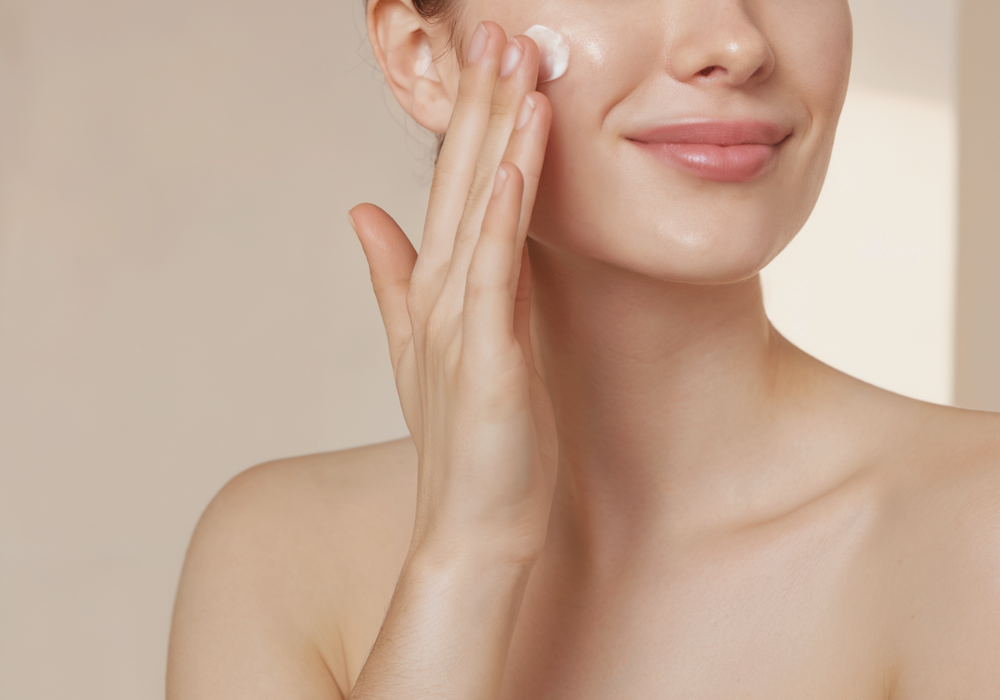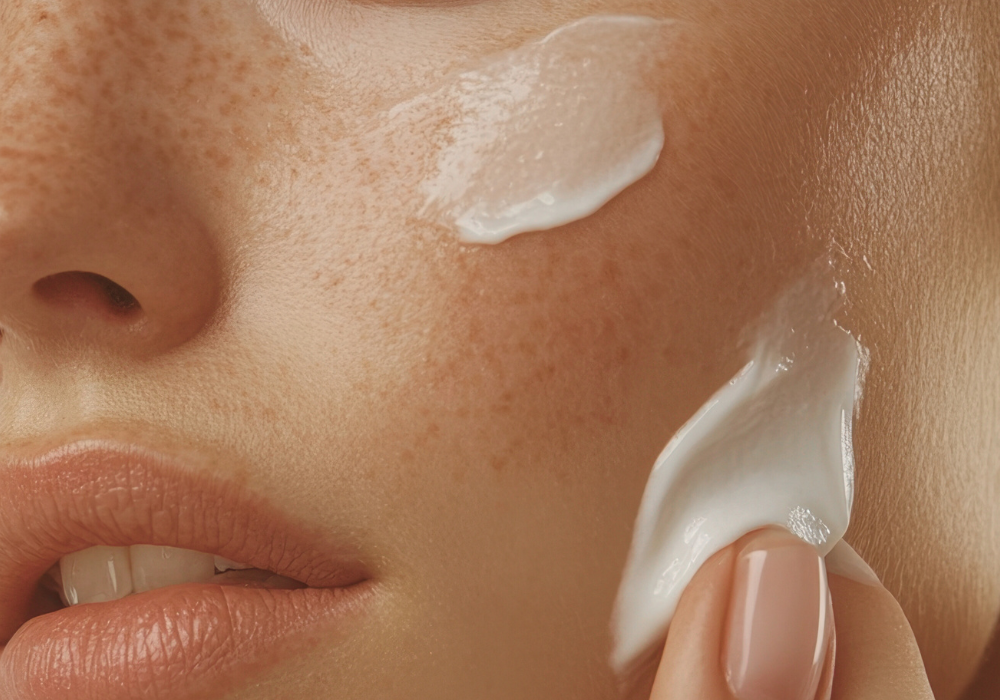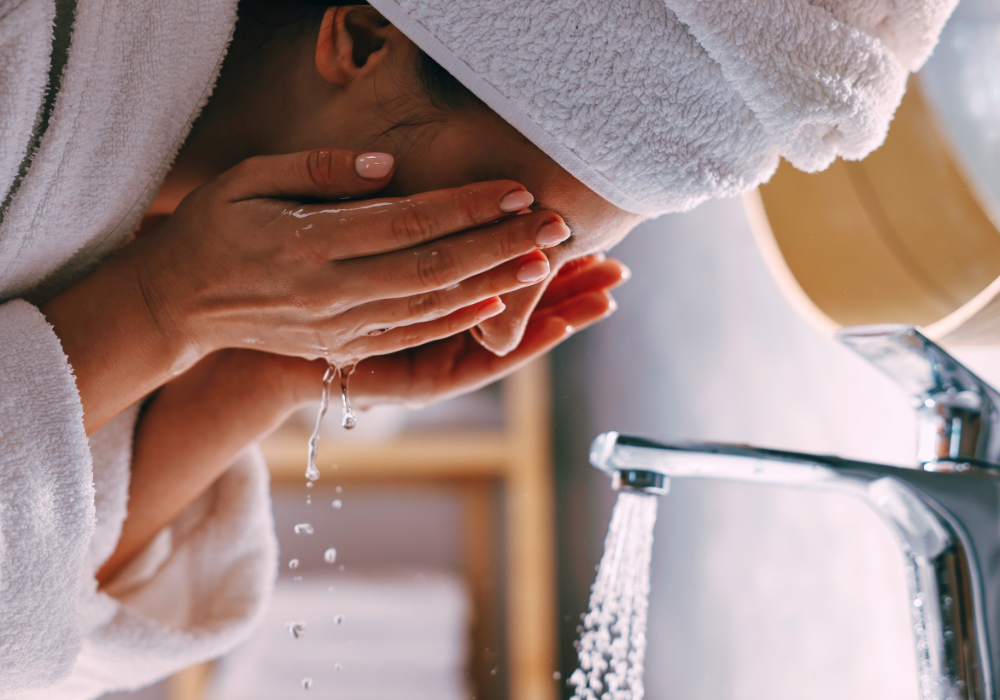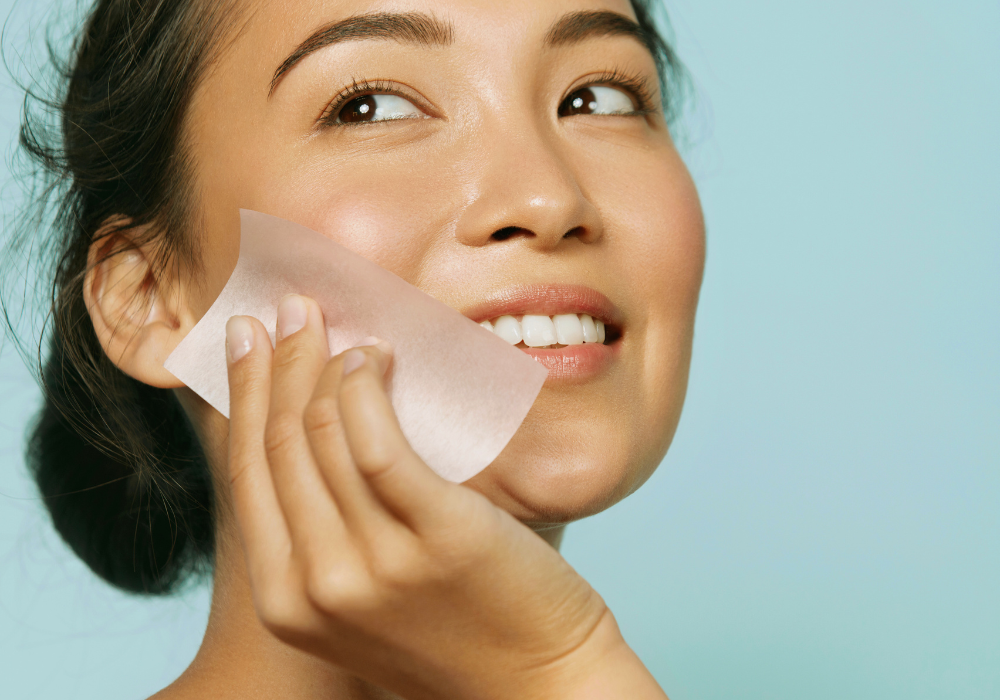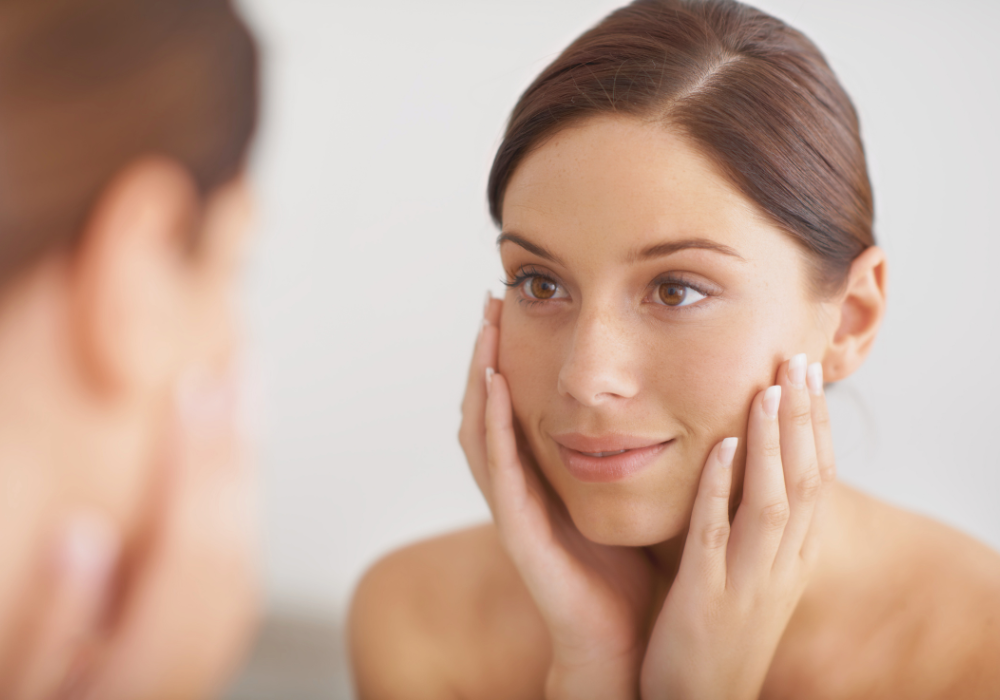Comprehensive data compiled from dermatological research on male skin biology, texture improvement science, and evidence-based skincare approaches
Men's skincare has evolved beyond basic cleansing, driven by mounting evidence that skin texture significantly impacts both appearance and social perception. Modern research reveals that male skin possesses distinct biological characteristics requiring targeted formulations rather than repurposed products. Understanding these differences enables smarter product selection, from science-backed exfoliating cleansers to evidence-based treatment approaches that deliver measurable texture improvements within weeks rather than months.
Key Takeaways
-
Male skin biology differs fundamentally from female skin - Men's skin is 10-20% thicker with higher collagen density, increased sebum production, and elevated hydration levels, requiring formulations that account for these structural differences rather than generic approaches.
-
Skin texture serves as a visible aging indicator - Smooth skin texture signals youthfulness and health, while coarse or irregular texture may indicate photodamage or elastosis, making texture improvement a practical anti-aging strategy.
-
Social perceptions respond measurably to texture changes - Research demonstrates that smoother skin enhances perceptions of attractiveness, health, and youthfulness in men, with negative effects of blemished skin outweighing positive effects of smooth skin.
-
Gender-specific formulations outperform generic approaches - Products accounting for men's higher sebum content, thicker skin structure, and different pH levels deliver superior results compared to repurposed women's formulations or one-size-fits-all solutions.
-
Multi-functional products align with male preferences - Men increasingly favor streamlined routines combining exfoliation, hydration, and barrier support in single formulations rather than complex multi-step protocols.
-
Evidence-based approaches yield predictable outcomes - Consistent use of appropriate hydroxy acid concentrations, charged hydration technology, and pH-balanced formulations produces visible texture improvements within 4-12 weeks when properly implemented.
Male Skin Biology and Structural Differences
1. Male skin is 10-20% thicker than female skin due to higher collagen density
Men's skin demonstrates approximately 10-20% greater thickness compared to women's skin, attributed to significantly higher collagen content and density. This structural difference affects how products penetrate the skin barrier and influences aging patterns, with men experiencing later onset of fine lines but deeper wrinkles when they do appear. The thicker dermal structure requires formulations with appropriate active ingredient concentrations and penetration enhancers to deliver effective results rather than remaining on the surface. Understanding this fundamental difference explains why generic skincare approaches often underperform compared to gender-specific formulations designed for male skin architecture. Source: NIH
2. Men have significantly higher sebum production than women due to hormonal influences
Sebum content in male skin significantly exceeds female levels, driven by androgenic hormones that stimulate sebaceous gland activity throughout adulthood. This elevated oil production contributes to larger pore appearance, increased acne susceptibility, and greasier skin texture that many men experience. While higher sebum offers some protective benefits against environmental damage, it also creates texture challenges when excess oil combines with dead skin cells to create rough, uneven surface topography. Products formulated with oil-soluble exfoliants like beta-hydroxy acids prove particularly effective for addressing texture issues in sebum-rich male skin by penetrating through lipid barriers to dissolve debris within pores. Source: NIH
3. Men have higher hydration levels in the stratum corneum compared to women
Despite common assumptions about male skin dryness, men actually demonstrate higher hydration levels in the stratum corneum (outermost skin layer) than women. This increased water content stems from structural differences in skin architecture and barrier function rather than product use. However, men also exhibit higher transepidermal water loss (TEWL), meaning they lose moisture more rapidly than women despite starting with higher baseline hydration. This paradox creates unique requirements for male skincare formulations that must deliver lasting hydration rather than temporary surface moisture. Advanced ingredients like charged hyaluronic acid that bind water molecules even after rinsing address this specific male skin challenge more effectively than conventional hydrators. Source: NIH
4. Women have higher skin pH compared to men, affecting product compatibility
Research reveals that female skin maintains higher pH levels compared to male skin, creating different optimal ranges for product formulation effectiveness. This pH difference influences how active ingredients perform on male versus female skin, with certain exfoliating acids working more efficiently within the slightly lower pH environment characteristic of men's skin. Products formulated at pH 4.5-5.5 align with skin's natural pH range and optimize acid efficacy without disrupting the protective acid mantle that defends against bacterial colonization and environmental damage. Generic formulations failing to account for these gender-specific pH differences may deliver suboptimal results or cause unnecessary irritation in male users. Source: NIH
5. Men exhibit deeper facial wrinkles and more prominent lower eyelid sagging
Male aging patterns differ markedly from female patterns, with men developing fewer but deeper wrinkles compared to women's tendency toward fine line formation. Additionally, men experience more pronounced facial sagging in the lower eyelid region, creating distinct texture and contour changes as aging progresses. These differences stem from the thicker dermal structure that resists fine line formation initially but creates more dramatic changes when collagen degradation eventually occurs. Understanding these male-specific aging patterns enables targeted prevention strategies focusing on collagen preservation, barrier protection, and gentle exfoliation that addresses textural irregularities before they become deeply established. Source: NIH
Skin Texture Impact on Perception and Social Outcomes
6. Skin texture serves as a critical indicator of aging and photodamage
Clinical dermatology defines skin texture as the smoothness or roughness of the skin's surface, serving as an important visual indicator of aging progression or photodamage accumulation. Extremely coarse skin texture may signal elastosis (breakdown of elastic fibers), while smooth texture generally correlates with younger-looking, healthier appearance across all age groups. This makes texture improvement a practical, measurable anti-aging strategy with visible outcomes that extend beyond subjective assessment. Unlike interventions targeting fat redistribution or bone structure changes, texture smoothing addresses a modifiable skin quality parameter that responds to consistent, evidence-based skincare approaches within weeks rather than requiring invasive procedures. Source: NIH
7. Blemished skin creates stronger negative impressions than smooth skin creates positive ones
Research on trait perception reveals an asymmetry in how skin texture influences social judgments: blemished skin generates larger and more salient negative effects than smooth skin produces positive effects. This means that texture irregularities actively harm social perceptions more powerfully than texture improvements enhance them, creating a compelling case for addressing visible texture concerns beyond simple vanity. The practical implication suggests that correcting texture problems delivers disproportionate benefits compared to seeking marginal additional smoothness improvements once reasonable texture quality has been achieved. For men in professional environments where first impressions influence outcomes, addressing prominent texture concerns represents a practical investment in social capital. Source: Sage Journals
8. Wrinkle removal in men significantly improves perceptions of youth, health, and attractiveness
When researchers digitally removed wrinkles and irregularities from photographs of men aged 40-70, observers consistently rated the edited faces as significantly younger, healthier, and more attractive than original versions. This experimental evidence demonstrates that skin smoothness improvements translate directly into measurable perception changes across multiple valued attributes rather than producing subtle or subjective effects. The magnitude of these perception shifts validates the practical importance of texture management as men age, particularly given that improvements don't require extreme interventions but rather consistent routines addressing surface irregularities. These findings support investment in regular exfoliation and barrier-supporting formulations that prevent texture degradation over time. Source: PsyPost
9. Female raters consistently perceive male faces with more homogenous skin as more attractive
Studies specifically examining male facial attractiveness demonstrate that women consistently rate men with more homogenous skin color and texture as more attractive, independent of other facial features. This indicates that skin quality improvements deliver measurable attractiveness benefits even when facial structure remains unchanged. The effect proves robust across different rating contexts and age groups, suggesting universal human preferences for smooth, even-toned skin as a health and mate quality indicator. For men concerned with appearance optimization, these findings suggest that skincare interventions targeting texture and tone homogeneity may deliver more accessible results than attempting to modify fixed structural features through cosmetic procedures. Source: PsyPost
Practical Approaches to Texture Improvement
10. No significant difference exists in skin elasticity between men and women
Despite numerous structural differences between male and female skin, elasticity measurements show no significant gender differences in this parameter. This finding indicates that men and women share similar baseline capacity for skin resilience and bounce-back characteristics, even though other skin properties differ substantially. The equal elasticity baseline means that male skin responds similarly to approaches targeting elasticity preservation through hydration, barrier support, and protection from degradation factors like UV exposure and oxidative stress. Products combining exfoliation with barrier-supporting ingredients like panthenol and moisture-locking compounds maintain this natural elasticity while addressing the texture irregularities that male skin develops through different pathways than female skin. Source: NIH
11. Men have higher microcirculation compared to women's skin
Male skin demonstrates higher microcirculation levels than female skin, reflecting increased blood flow to facial tissue. This enhanced circulation supports nutrient delivery and waste removal processes that influence skin health and appearance. The higher baseline circulation may contribute to faster healing responses in male skin but also creates different requirements for calming and soothing ingredients when irritation occurs. Formulations designed for male skin benefit from incorporating ingredients that work synergistically with this enhanced microcirculation rather than attempting to modify it, supporting natural processes while addressing specific texture concerns through targeted exfoliation and hydration approaches. Source: NIH
12. Men have higher transepidermal water loss than women, affecting barrier function
Male skin exhibits higher transepidermal water loss (TEWL) rates compared to female skin, indicating that men lose moisture through the skin barrier more rapidly despite starting with higher baseline hydration. This elevated TEWL creates unique challenges for maintaining optimal hydration levels throughout the day, particularly in dry or air-conditioned environments. The higher water loss rate explains why many men experience tight or uncomfortable skin sensation even without clinical dryness, and why conventional moisturizers may provide only temporary relief. Advanced formulations incorporating moisture-binding ingredients that create lasting hydration matrices prove more effective for male skin than simple emollients that provide temporary surface comfort without addressing the underlying barrier permeability. The Exfoliating Daily Cleanser addresses this challenge through charged hyaluronic acid that binds water molecules to skin even after rinsing, delivering lasting hydration that survives the elevated TEWL characteristic of male skin. Source: NIH
13. Higher skin pigmentation in men affects photodamage patterns and texture changes
Men demonstrate significantly higher skin pigmentation levels compared to women, influencing how UV exposure affects texture development and aging patterns. This increased baseline pigmentation provides some inherent photoprotection but doesn't eliminate photodamage risk, which remains the primary driver of premature texture degradation through collagen breakdown and elastin damage. The pigmentation differences also affect how post-inflammatory hyperpigmentation develops following acne or other inflammatory conditions, creating persistent texture and tone irregularities that many men experience. Consistent exfoliation through alpha-hydroxy acids helps address both the accumulated photodamage and the pigmentation irregularities, working to brighten complexion while simultaneously smoothing texture through accelerated cell turnover. Combined with daily sun protection, this approach prevents further damage accumulation while gradually improving existing texture concerns. Source: NIH
Frequently Asked Questions
How long does it take to see visible skin texture improvements in men?
Most men notice initial texture improvements within 2-3 weeks of consistent product use, with more significant changes becoming visible after 4-12 weeks. Research indicates visible results typically appear within 28 days when using science-backed formulations with appropriate active ingredient concentrations. Individual timelines vary based on starting texture condition, product selection, and routine consistency.
Can men fix skin texture issues with just a cleanser?
Multi-functional cleansers combining exfoliation, hydration, and barrier support can deliver meaningful texture improvements as a standalone step. The Exfoliating Daily Cleanser incorporates triple-action hydroxy acids (AHA 1%, BHA 0.4%, PHA 1%) plus charged hyaluronic acid and panthenol to address texture in a single product, simplifying routines while delivering comprehensive benefits that traditionally required multiple products.
Why do men need different skincare products than women?
Male skin is 10-20% thicker with higher sebum production, different pH levels, and distinct aging patterns compared to female skin. These biological differences mean products formulated for women often contain inappropriate active concentrations or pH ranges for optimal performance on male skin. Gender-specific formulations account for thicker dermal structure, higher oil content, and male-specific texture concerns.
What percentage of men actually struggle with uneven skin texture?
While specific prevalence statistics vary, research shows that blemished or uneven skin creates measurably negative social impressions, and male-specific factors like shaving irritation, higher sebum production, and deeper wrinkle formation contribute to widespread texture concerns. Growing awareness of skin texture issues has driven increased adoption of male skincare products in recent years.
How often should men exfoliate to improve skin texture?
Exfoliation frequency depends on acid concentration and individual skin sensitivity. Gentle daily exfoliation using low-concentration hydroxy acid blends (1-2.5% total) proves safe and effective for most men, providing consistent cell turnover without over-exfoliation risks. Products formulated at skin's natural pH (4.5-5.5) minimize irritation while optimizing acid efficacy, enabling sustainable daily use that delivers cumulative texture improvements.


